Saudi Arabia was pleased to serve 54 million pilgrims during the last 25 years
GASTAT conducts annual enumeration for pilgrims
Saudi Arabia was pleased to serve 54 million pilgrims during the last 25 years
According to GASTAT’s official statistics, the total number of pilgrims who were served by the Kingdom of Saudi Arabia during the last twenty-five years reached (53.928.358) pilgrims. The lowest number of pilgrims was registered in the Hajj season of 1415 H where the number of pilgrims reached (1.781.370). On the other hand, the highest number of pilgrims was registered in 1433 H where the number of pilgrims reached (3.161.573) pilgrims. Additionally, during the last ten years the number of pilgrims reached (23.834.151) pilgrims.
GASTAT spokesman, Taiseer Almofarrej said that counting the numbers of pilgrims each year is one of the important tasks performed by GASTAT. This task has started since 1390 H in order to provide accurate information that would help all governmental entities to plan and develop the services provided to pilgrims. However, the task has been performed for many years, with a lot of developments in the methods of counting and enumeration so that they can be applied in an accurate, comprehensive, and professional way.
Mr. Almofarrej added that the Hajj statistics program aims to complete all programs of future plans for the purpose of providing the necessary services for the pilgrims, whether social, health, security, food or transportation services. It is done by using a time series of accurate data on the numbers of pilgrims, the estimates of manpower needed to serve the pilgrims and to maintain their safety and comfort during the Hajj season of each year. The data and numbers of pilgrims are used by the entities concerned with the study of the preparations and the main facilities in Makkah and the holy places and taken into account when preparing the necessary plans. In addition, it provides accurate information and data about hajj statistics for researchers, students, beneficiaries and those interested in this field. Furthermore, the data on the number of pilgrims is used in the evaluation of the activities and events conducted by the entities concerned with serving the pilgrims, as well as to identify ways of arrival of the domestic pilgrims and the pilgrims coming from outside the Kingdom.
The official spokesman of the General Authority for Statistics revealed that the statistics of the services provided by government agencies to pilgrims will be announced periodically from the first of Dhu al-Hijjah. Furthermore, the Authority will release the final and official number of pilgrims on the evening of 9th of Dhu al-Hijjah, through the Hajj statistics bulletin in details which includes: number of pilgrims inside, number of pilgrims outside, number of pilgrims by sex, nationality and destination, number of vehicles transporting pilgrims as well as types, and other detailed data.
It is worth mentioning that during the previous 25 years, the number of pilgrims exceeded three million pilgrims once, while exceeding more than two million pilgrims twelve times. On the other hand, it fell from two million pilgrims during twelve seasons, and the lowest was recorded in 1415, according to the following table.
Numbers of pilgrims during the past 25 years
S
Year
Total number of pilgrims
1
1414H
1.834.780
2
1415H
1.781.370
3
1416H
1.865.234
4
1417H
1.942.851
5
1418H
1.832.114
6
1419H
1.831.998
7
1420H
1.839.154
8
1421H
1.913.263
9
1422H
1.944.760
10
1423H
2.041.129
11
1424H
2.012.074
12
1425H
2.164.469
13
1426H
2.258.050
14
1427H
2.378.636
15
1428H
2,454,325
16
1429H
2,408,849
17
1430H
2,313,278
18
1431H
2,789,399
19
1432H
2,927,717
20
1433H
3,161,573
21
1434H
1,980,249
22
1435H
2,085,238
23
1436H
1,952,817
24
1437H
1,862,909
The General Authority for Statistics (GASTAT) Released the Real Estate Price Index, Q2, 2018
The General Authority for Statistics (GASTAT) Released the Real Estate Price Index, Q2, 2018
On Sunday, the 16th of Dhu al-Qa'dah 1439H corresponding July 29, 2018, The General Authority for Statistics (GASTAT) released the report of Real Estate Price index, Q2 2018 on GASTAT official website www.stats.gov.sa.
The real-estate price index has recorded a decline by (7.0%) compared to the previous quarter (Q1, 2018), where the indicator of the Real Estate Price index reached (83.6) in the second quarter of 2018 compared to (84.2) in (Q1, 2018). This decline can be attributed to the decrease in the main sectors composing it: the housing sector (8.0%), the commercial sector (4.0%), and the agricultural sector (1.0%) compared to the first quarter of the current year.
At the level of the residential sector in details, the second quarter of 2018 witnessed slight decreases compared to the previous quarter, where the residential land decreased by (0.9%), the villas decreased by (1.7%), the apartments decreased by (0.6%), while the houses decreased by (0.1%). On the other hand, residential buildings increased by (0.2%). Regarding the commercial sector, commercial plots decreased by (0.4%), compared to the previous quarter. However, the agricultural sector witnessed a decrease by (0.1%). in agricultural lands.
Furthermore, the index is based on the data records about real-estate’s transactions available at the Ministry of Justice, and it is an important tool to support economic and statistical decision makers regarding the changes of property prices and future forecasts during different periods of time. The index has three main sectors consisting of several types of real estate: housing sector which includes the following (plot of land, building, villa, apartment and house), commercial sector includes (plot of land, building, exhibition/commercial center and shop), and the agricultural sector with only one category which is the agricultural land.
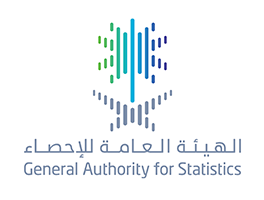
الهيئة العامة للإحصاء تصدر تقرير نتائج مسح صحة الأسرة 2017م
Containing more than 85 Indicators of Household Health in the Kingdom
GASTAT Releases the Results of the Household Health Survey 2017
On Thursday, Dhu al-Qidah 13th, 1439H. (Corresponding to July 26th, 2018) the General Authority for Statistics (GASTAT) released the results of the Household Survey (2017) on its official website (www.stats.gov.sa) as part of the results of the new surveys issued by GASTAT. This survey is the first survey in the field of household health, which was carried out during the period from (21/2/1439H. to 15/3/1439H.) corresponding to (10/11/2017 to 3/12/2017). It is one of the most important sources of data needed for development planning in the health and social fields at the national level. The bulletin includes more than 85 indicators on health and social phenomena and on family health in the Kingdom.
The results showed that 94.2% of the population at the age group (15 years and above) have good or very good health according to their personal assessment of their health. Regarding Saudi population, the percentage of Saudi males who have good or very good health reached 93.5%, whereas the Saudi females reached 91.7%. The results also showed that 25.4% of the population at the age group (15 years and above) undergo a periodic medical check-up to check their health at least once a year. While the percentage of population who are covered by a health insurance reached 37.1% of total population, 13.9% of them are Saudis and 75.4% are non-Saudis.
The results also showed that the percentage of population who suffer from chronic diseases diagnosed by a doctor at the age group (65 years and above) is the highest for both males and females. The percentage in this group is 73.8% for females compared to 67.8% for males. The percentage of population who have been diagnosed with diabetes by a doctor reached 8.5% of the Kingdom population, the males diagnosed with diabetes reached 8.7% and 8.3% for females. The percentage of Saudi population who have been diagnosed with diabetes reached 10.1%, 10.4% for Saudi males and 9.8% for Saudi females.
The percentage of population (15 years and above) who have been diagnosed with cancer disease reached 0.17%, whereas the percentage of population (15 years and above) who have been diagnosed with cardiovascular diseases reached 1.14%. The results of the survey also showed that the total fertility of Saudi females reached 2.35%, while the total fertility rate in the Kingdom is (2) births per one woman in the Kingdom. The percentage of births performed by specialized doctors was 99.7%.
It is worth mentioning that this survey was conducted in accordance with the international standards recognized by the World Health Organization and the United Nations. The results will enable specialists to study many health phenomena, extract many indicators related to health in the Kingdom, as well as maternal and child indicators, and indicators about health lifestyle in the community. It also provides data about smoking, the size of accident injuries, as well as the study of marriage, family planning, fertility and child mortality. For comparison purposes and in order to unify the statistical method and style in the implementation of the household health surveys, all 13 regions of the Kingdom were covered through a representative sample of households.
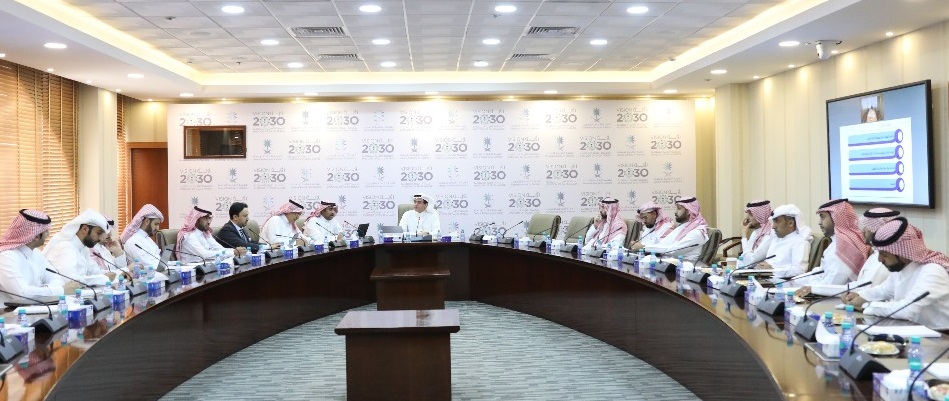
فرق عمل "اللجنة التنسيقية للهيئة العامة للإحصاء" تبحث طرق تبادل البيانات بين الجهات الحكومية
With the participation of 31 government entities over a period of 5 days
The Task Teams of the (Coordination Committee of the General Authority for Statistics) discuss ways of exchanging data between government entities
Within the framework of the General Authority for Statistics' efforts to facilitate and exchange data and information with various government agencies, the coordination committee meetings of the Coordination Committee of the General Authority for Statistics took place during the five days from July 1st to 5th , 2018, with the participation of 31 government entities.
The official spokesman of the General Authority for Statistics, Tayseer Al-Mufrrej, explained that the coordination teams discussed several topics, including the discussion of the general frameworks for the coordination work between the various entities in the joint works. They also reviewed the challenges and obstacles facing the task teams and discussed the appropriate solutions. In addition, they reviewed the statistical work carried out during the last period. The government agencies also made a number of development proposals for data dissemination and raising statistical awareness, in addition to data exchange.
On the other hand, Mr. Al-Mufrrej said that the Coordination Committee of the General Authority for Statistics includes a number of coordination teams, including the coordination Task team for Economic Statistics, which includes, the Ministry of Economy and Planning, the Ministry of Health, the General Authority for Sport, the Ministry of Trade and Investment, the Ministry of Labor and Social Development , Ministry of Energy, Industry and Mineral Resources, Ministry of Finance, Council of Saudi Chambers, Saudi Customs, General Authority for Investment, Saudi Arabian Monetary Agency, General Authority for Tourism and National Heritage, and Small and Medium Enterprises Authority.
The coordination task team on Environment Statistics includes: The Ministry of Municipal and Rural Affairs, the Ministry of Environment, Water and Agriculture, the General Authority for Meteorology and Environmental Protection, Saline water conversion Corporation and the Royal Commission for Jubail and Yanbu.
The coordination task team on Energy Statistics includes: The Ministry of Energy, Industry and Mineral Resources, the Saline Water Conversion Corporation, King Abdullah City for Atomic and Renewable Energy, the Ministry of Energy's National Renewable Energy Program, the Royal Commission for Jubail and Yanbu and the Electricity & Co-Generation Regulatory Authority.
The coordination task team of Masdar program includes: The Ministry of Health, Ministry of Housing, Ministry of Commerce and Investment, Ministry of Education, Ministry of Municipal and Rural Affairs, Ministry of Environment, Water and Agriculture, Ministry of Civil Service, Saudi Arabian Monetary Agency, General Organization for Social Insurance , The Public Pension Agency , the General Auditing Bureau, the Yesr Program, the National Information Center of the Ministry of the Interior, the Ministry of Justice, the Ministry of Economy and Planning, the Ministry of Finance and the Ministry of Labor and Social Development.
While the coordination task team of the social statistics includes: The Ministry of Justice, the Ministry of Housing, the Ministry of Labor and Social Development, the Ministry of Health, the Ministry of Municipal and Rural Affairs, the Public Prosecution, the Ministry of the Interior, the Ministry of Civil Service, the Ministry of Education and the Saudi Post.
It is worth mentioning that the meetings were held as preparatory meetings for the meeting of the Coordination Committee of the General Authority for Statistics, which will be held on the tenth of next September. The "Coordination Committee" was formed permanently to coordinate the statistical work between the General Authority for Statistics and related entities, in accordance with the decision of the Council of Ministers (11) dated 13/1/1437 AH on the organization of the Commission, aimed at activating and organizing the statistical work through the establishment of a comprehensive, accurate and unified statistical system, in addition to the follow-up of its implementation. It also develops the plans and programs necessary to meet statistical needs; in order to serve the developmental plans, scientific research, and various activities.
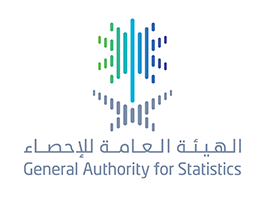
الهيئة العامة للإحصاء: ارتفاع في مُعدَّل المشاركة الاقتصادية للسعوديين، و (6.1٪) مُعدَّل بطالة إجمالي السكان، وبطالة السعوديين: (12.9٪)
A decline in the numbers of non-Saudi workers by more than 234 thousand during Quarter 1, 2018
GASTAT: Saudis economic participation rate increased, total population unemployment rate is (6.1%), and Saudis unemployment rate is (12.9%)
The General Authority for Statistics (GASTAT) published on its official website www.stats.gov.sa the Labor Market Bulletin for the first quarter of 2018, which provides comprehensive data and indicators on the labor market in Saudi Arabia from the estimates of the labor force survey conducted by GASTAT quarterly, in addition to the labor market data from the administrative records of some relevant entities (Ministry of Labor and Social Development, Ministry of Civil Service, General Organization for Social Insurance, Human Resources Development Fund and National Information Center).
The results of the bulletin for the first quarter of 2018 indicated that the total number of workers from the data of administrative records in Saudi Arabia (Q1, 2018) reached (13,333,513) individuals, compared to (13,581,141) individuals in Q4, 2017. However, the first quarter of 2018 witnessed a decrease in the numbers of non-Saudi workers by (234,191) individuals compared to the fourth quarter of 2017, as they registered (10,183,104) individuals in Q1, 2018 compared to (10,417,295) in Q4, 2017. On the other hand, the numbers of Saudi workers registered (3,150,409) individuals.
As for the rate of population’s economic participation (15 years and older), it recorded (55.5%) in Q1, 2018 compared to (55.6%) in Q4, 2017. However, the economic participation rate of Saudis increased by (41.89%) compared to (41.86%) in the previous quarter. Saudi males’ economic participation (15 years and older) increased by (63.5%) compared to (63.4%) in the previous quarter, whereas Saudi females’ economic participation (15 years and older) increased by (19.5%) compared to (19.4%) last quarter.
The results also showed that the rate of population’s unemployment (15 years and older) reached (6.1%) during the first quarter of 2018 compared to (6.0%) in Q4, 2017. Saudis unemployment rate (15 years and older) registered (12.9%) in the first quarter of 2018, but the Saudi females’ unemployment rate has decreased during this quarter registering (30.9%) compared to (31.10%) in Q4, 2017. In contrast, Saudi males’ unemployment rate registered an increase with (7.6%) compared to (7.5%) in Q4, 2017.
In addition, the total number of Saudi jobseekers from the estimates of administrative records (Jadarah, Sa’ed, and Hafiz programs) reached (1,072,162) individuals during the first quarter of 2018 compared to (1,086,561) individuals with a decline by (14,399) individuals from last quarter. Saudi male job seekers recorded (16.1%), while female jobseekers recorded (83.9%).
The bulletin included a large number of detailed data on workers according to the regulations they are subject to, and according to the nationality, gender, age, administrative region and educational level, as well as data on job seekers, average monthly wage, working hours and domestic workers.
On the other hand, GASTAT spokesman Mr. Taiseer Almofarrej, clarified that there is a difference between job seekers and unemployed. The "unemployed" according to the Labor Force Survey are the individuals (15 years and older) who were jobless during the period of the time reference (the survey period): the previous week of the household visit and have been looking for a job seriously during the four weeks prior to the household visit (they have at least taken one way to look for a job). This includes those who did not search for work during the four weeks prior to the household visit because they were waiting for a job or starting their own business in the coming period, where they had already been looking for work before the time reference period and at the same time they were able to work and were ready to join it (If available), during the week preceding the household visit.
Additionally, the definition of job seekers is the Saudi individuals (males or females) enrolled in the job search programs of the Ministry of Civil Service (Jadarah or Sa’ed) and the Human Resources Development Fund (Hafiz). And they register their personal data, qualifications, practical experiences and CVs through an electronic system.
It is worth to mention that job seekers in the administrative records are not subject to the internationally recognized standards and conditions of unemployment approved by the ILO and therefore are not considered to be unemployed. Hence, not every job seeker is considered unemployed, s/he may be looking for work and is working in another job, this is the case in job seekers in government entities who are working, for example, in the private sector.

الهيئة العامة للإحصاء تُجري 5 أعمال إحصائية ميدانية الأسبوع المقبل
Targeting more than 35,000 households and 53,000 Establishments
The General Authority for Statistics is conducting 5 field statistical works next week
The General Authority for Statistics (GASTAT) has invited all citizens and residents, as individuals or in corporations, to cooperate with the statisticians working in the field in various regions of the Kingdom of Saudi Arabia, who their statistical work will start next Tuesday Shawwal 26th,1439AH (July 10th, 2018). GASTAT asserted that all information and data given by citizens, residents and corporations is confidential and will be treated as an information basis which is reliable and can be used by development decision-makers in all relevant government entities that will serve the interest of citizens and residents.
GASTAT spokesman, Mr. Taiseer Almofarrej said that more than (1600) statisticians are conducting 5 social and economic statistical surveys during this period until Dhu Al-Qidah 20th, 1439 AH (August 2nd, 2018). These statistical works are targeting more than 35,000 households and 53,000 establishments in all (13) administrative regions. He mentioned that the field surveys of the economic indicators are used by the decision makers who are involved in the unemployment issue and increasing the employment in the internal trade activity. In addition, the recent statistical data contribute to the knowledge of the volume of internal trade activity and the measurement of its contribution to GDP. He pointed out that the Labor Force Survey helps to extract real indicators and data on unemployment, workers and the economic participation in the Kingdom, as well as data on labor force for the population (15 years old and above). This survey is one of the household field surveys based on a sample, conducted by GASTAT in the field of social statistics. He added that these data are important in terms of giving a picture of the size of the labor force among the working age population of male and female, active and economically inactive.
Mr. Almofarrej mentioned that the field surveys that will be conducted by GASTAT next week by statisticians who are holding official ID cards includes: Industrial Production Survey (3rd quarter, 2018), Economic Indicators Survey (3rd quarter, 2018), Internal Trade Activity Survey (3rd quarter, 2018), Construction Activity Survey 2018, and Tourism Survey 2018.

هيئة الإحصاء تصدر "نشرة سوق العمل" للربع الأول للعام 2018م عبر مؤتمر صحفي الخميس المقبل
GASTAT releases the labour market bulletin (first quarter, 2018) next Thursday in a press conference
The General Authority for Statistics (GASTAT) will hold a press conference next Thursday Shawwal 21, 1439H corresponding July 5, 2018 in its head office in Riyadh. In this conference, GASTAT will announce the labor market bulletin results for the first quarter of 2018. GASTAT spokesman, Mr. Taiseer Almoffarej said that we will announce the population’s total unemployment rate, Saudis’ unemployment rate, and the labor force data of quarter 1, 2018. In addition, the labor market bulletin’s statistical methodology will be explained to all media representatives who are considered essential partners in spreading the statistical data for the remarkable role of media channels in raising statistical awareness among society.
Almofarrej mentioned that GASTAT worked hard to make sure that the bulletin is thorough and includes all data and information needed by GASTAT clients while presenting them in a clear and transparent way which is an important standard of the statistical work.
It is worth mentioning that the labor market bulletin, which is published by GASTAT quarterly, includes the data of labor force, employed and unemployed persons, economic participation and unemployment rate, and job seekers numbers. These data are taken from the administrative records of the Ministry of Labor and Social Development, General Institution of Social Insurances, Human Recourses Fund, and National Information Center.
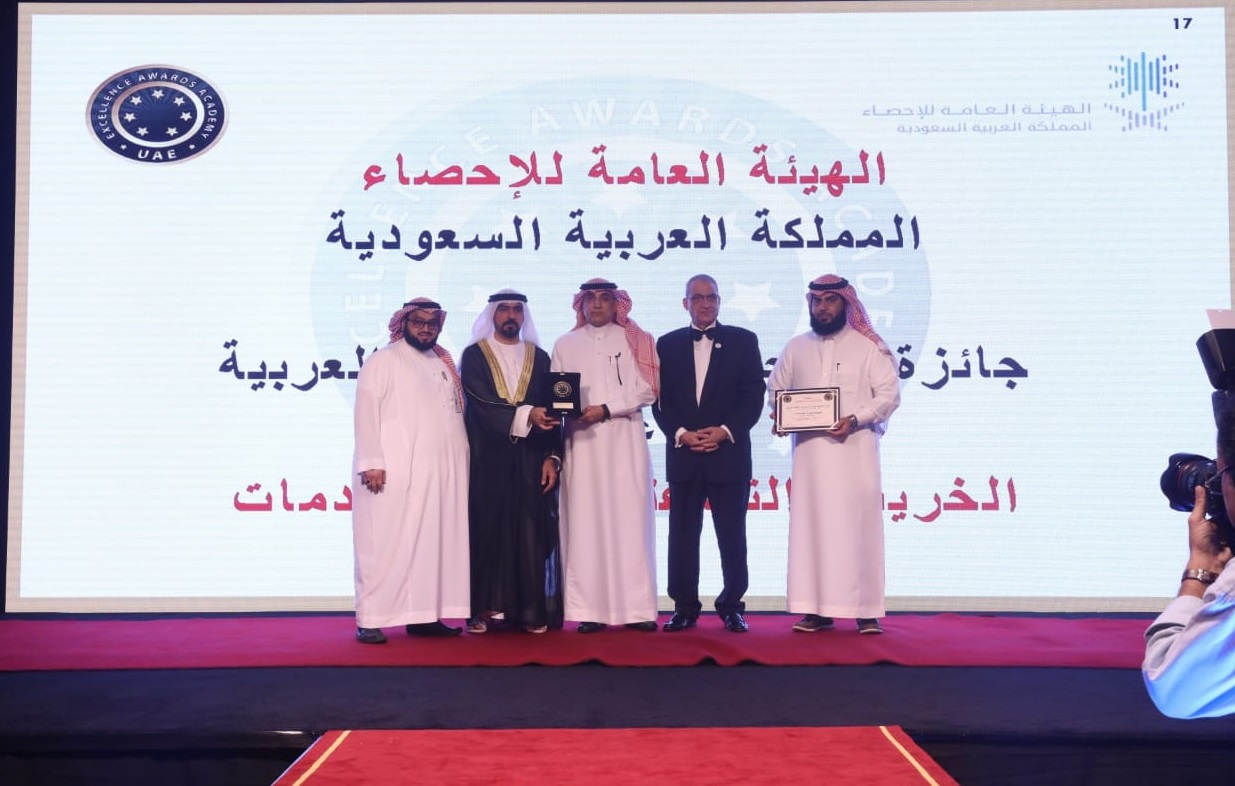
الهيئة العامة للإحصاء تفوز بجائزة الإنجازات الحكومية العربية 2018 م عن خدمة "الخريطة التفاعلية لدليل الخدمات"
Organized by the Excellence Awards Academy at the level of the Arab region
GaStat Wins the Arab Government Achievements Award (2018) for the “Interactive map of the Services Guide”
The General Authority for Statistics (GaStat) won the Arab Government Achievements award for the “Interactive map of the Services Guide” launched recently through GaStat’s official website.
On Tuesday 13/10/1439H., the Excellence Awards Academy in U.A.E, the organizer of the “Afkar” Award for Excellence in Government Innovation for the year 2018 at the level of Arab region, announced selecting the Interactive Map for the Services Guide issued by GaStat, within the top seven excellent services in the region among more than 47 services nominated to win the award.
The Interactive Map of the Services Guide is a technical tool provided by GaStat to view the services’ statistics guide for the Kingdom’s cities and villages. It is the unified reference of all government and private entities available services in different regions of the Kingdom, at the level of cities and villages in the 13 administrative regions. It includes data and information of 16,263 localities (village-city). It includes geographical information and data, Health and education services, data on the availability of administrative, social and agricultural services and public services. The total number of the main tables and its sections included in the guide is (5810) detailed table.
The guide, which was prepared by the contribution of 27 government entities, is one of the most important statistical resources for all data of the Kingdoms’ cities and villages. It is issued by GaStat every 3 years in order to provide unified data and information with official documentation and a high degree of accuracy for all services available in the cities and villages of the Kingdom so that these data are a unified reference for all ministries, government agencies and institutions, students and researchers, and media.
The Interactive map of the Services Guide provides the main data for planners, policy and decision makers according to the localities in the administrative regions. A user can perform a search by selecting the locality that has a specific service in a specific search circle, or selecting the nearest locality on the map. It also provides the possibility of displaying the distribution of services according to the type of service or administrative regions. The service also includes a “Services calculator” which is a statistical tool to conduct statistical calculations based on the databases. The results can be viewed on the map to understand the geospatial distribution of any search, and the results can be extracted on Excel file. The guide contains geographical data and information at the level of the locality (city, village) in addition to the available private and government education services (all three levels and Qura’an schools (boys and girls)), and services of university education, technical education, agricultural education, health education, scientific, professional and commercial institutes, disabled educational institutes, schools of adult education and literacy and kindergartens.
Health services including hospitals, primary health care centers, government and private clinics, Saudi Red Crescent services, data of administrative centers (governorate, center), police and civil defense centers, civil affairs, passports agency, endowments, labor offices, the centres of the General Presidency of the promotion of Virtue and the Prevention of Vices, courts, municipalities Social security offices, social development centers, directorates and branches of the Ministry of Agriculture, branches and offices of agricultural development funds, real estate development, industrial development, , And branches of ministries and agencies as well as public services, including electricity, water, telecommunications, postal services, telegraph offices, tourism, travel and banking services.
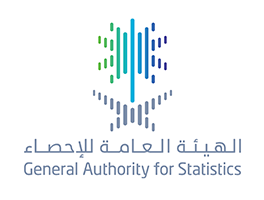
المملكة تشارك في مؤتمر البيانات الضخمة للإحصاءات الأوروبية في بلغاريا
In Order to Benefit from the Best Statistical Practices to Improve the Statistical Sector
Saudi Arabia Participates in the International Conference “Big Data for European Statistics” in Bulgaria
Deputy Chairman of Statistical Innovation and Client Services, Dr.Mohmmad AL-Ahmad represented the General Authority for Statistics (GaStat) in the international conference “Big Data for European Statistics” that was held between 14-15 May 2018 in Sofia, Bulgaria.
Dr.AL-Ahmad clarified that the conference discussed the results of the ESSnet Big Data project; a network project of 22 partners from 20 European countries and it is financed by Eurostat. The project aimed at integrating big data of official statistics through sharing expertise of big data possible sources and creating an implementation plan.
He added that the project started in February 2016 for 28 months until May 2018 and it consists of 10 workgroups: (WP1 to WP8) are for the content, (WP10) is for the coordination and (WP9) is for the entire project.
GaStat accepted the invitation of ESSnet Big Data project in order to learn more about the European countries’ experiences in this field, and to benefit from these practices to serve GaStat’s plans of using big data for producing new statistical indicators in Saudi Arabia. On the other hand, the participants visited the National Statistics Institute NSI in Bulgaria and met Mr. Sergey Tsvetarsky NSI president to view the institute’s activities and statistical works.
GaStat participation in this conference comes within its strategic plans to build international partnership between the Kingdom and a number of distinguished countries in this field, also to benefit from the best international statistical expertise and practices in order to improve the statistical sector in the Kingdom.
